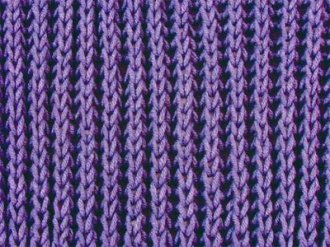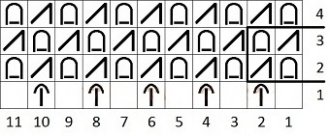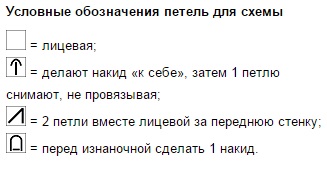
An English Rubber
 One of the simplest, but at the same time, the popular ties of the matches are the English rubber. Most commonly, this is used in leaching clothing items such as scarf, cap or sweater. Know that the English rubber is deformed in length and therefore only the central parts of the product can be performed. The theft of any of the objects is the best thing to do with a more lasting shame. Another feature of this relay is that the connection is very voluminous and therefore requires a large number of threads.
One of the simplest, but at the same time, the popular ties of the matches are the English rubber. Most commonly, this is used in leaching clothing items such as scarf, cap or sweater. Know that the English rubber is deformed in length and therefore only the central parts of the product can be performed. The theft of any of the objects is the best thing to do with a more lasting shame. Another feature of this relay is that the connection is very voluminous and therefore requires a large number of threads. When the English version of the matches comes from the thread of the same shade, its face and knowledge side are no different. Lessons for starters are intended to provide a detailed description of the techniques needed to correctly unleash the English rubber. It can be linked to both conventional and circular matches, but circular matches are used when, for example, a round-table without a stitch is needed.
When the English version of the matches comes from the thread of the same shade, its face and knowledge side are no different. Lessons for starters are intended to provide a detailed description of the techniques needed to correctly unleash the English rubber. It can be linked to both conventional and circular matches, but circular matches are used when, for example, a round-table without a stitch is needed.
The first thing you need to know to do a beautiful English rubber is a set of an odd number of hinges. That's what you do if you want to have a flat edge full of it and make it beautiful from two sides. Next thing, it's the performance of the lyric hinge, then the locator and the so-called direct oxidation should be tied. It's because of the nakids and the volume is growing. The naquid does not result in the audacity of the product, but adds the number of belts in the particular row. Another action will be taken with the recovery of the initial quantity, and for that purpose, the nakid and one main hinge will contact together. Do this with every oxid. For starters, we'll look at the example of how the track, known as the English rubber, is tied up, and what is its pattern.
That's what you do if you want to have a flat edge full of it and make it beautiful from two sides. Next thing, it's the performance of the lyric hinge, then the locator and the so-called direct oxidation should be tied. It's because of the nakids and the volume is growing. The naquid does not result in the audacity of the product, but adds the number of belts in the particular row. Another action will be taken with the recovery of the initial quantity, and for that purpose, the nakid and one main hinge will contact together. Do this with every oxid. For starters, we'll look at the example of how the track, known as the English rubber, is tied up, and what is its pattern.









